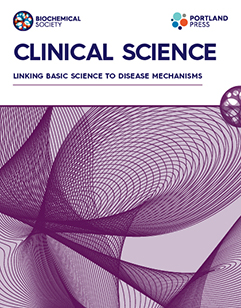Inflammatory liver diseases and susceptibility to sepsis.
IF 6.7
2区 医学
Q1 MEDICINE, RESEARCH & EXPERIMENTAL
引用次数: 0
Abstract
Patients with inflammatory liver diseases, particularly alcohol-associated liver disease and metabolic dysfunction-associated fatty liver disease (MAFLD), have higher incidence of infections and mortality rate due to sepsis. The current focus in the development of drugs for MAFLD is the resolution of non-alcoholic steatohepatitis and prevention of progression to cirrhosis. In patients with cirrhosis or alcoholic hepatitis, sepsis is a major cause of death. As the metabolic center and a key immune tissue, liver is the guardian, modifier, and target of sepsis. Septic patients with liver dysfunction have the highest mortality rate compared with other organ dysfunctions. In addition to maintaining metabolic homeostasis, the liver produces and secretes hepatokines and acute phase proteins (APPs) essential in tissue protection, immunomodulation, and coagulation. Inflammatory liver diseases cause profound metabolic disorder and impairment of energy metabolism, liver regeneration, and production/secretion of APPs and hepatokines. Herein, the author reviews the roles of (1) disorders in the metabolism of glucose, fatty acids, ketone bodies, and amino acids as well as the clearance of ammonia and lactate in the pathogenesis of inflammatory liver diseases and sepsis; (2) cytokines/chemokines in inflammatory liver diseases and sepsis; (3) APPs and hepatokines in the protection against tissue injury and infections; and (4) major nuclear receptors/signaling pathways underlying the metabolic disorders and tissue injuries as well as the major drug targets for inflammatory liver diseases and sepsis. Approaches that focus on the liver dysfunction and regeneration will not only treat inflammatory liver diseases but also prevent the development of severe infections and sepsis.炎症性肝病与败血症的易感性。
炎症性肝病患者,尤其是酒精相关性肝病和代谢功能障碍相关性脂肪肝(MAFLD)患者的感染率和败血症死亡率较高。目前,治疗代谢功能障碍相关性脂肪肝的药物研发重点是缓解非酒精性脂肪性肝炎和预防肝硬化的发展。在肝硬化或酒精性肝炎患者中,败血症是死亡的主要原因。作为新陈代谢中心和关键的免疫组织,肝脏是败血症的守护者、调节者和目标。与其他器官功能障碍相比,肝功能障碍的败血症患者死亡率最高。除了维持新陈代谢平衡外,肝脏还产生和分泌对组织保护、免疫调节和凝血至关重要的肝脏激素和急性期蛋白(APPs)。炎症性肝病会导致严重的代谢紊乱,损害能量代谢、肝脏再生以及 APPs 和肝脏因子的产生/分泌。在此,作者回顾了(1) 葡萄糖、脂肪酸、酮体和氨基酸代谢紊乱以及氨和乳酸清除在炎症性肝病和败血症发病机制中的作用;(2) 细胞因子/凝血因子在炎症性肝病和败血症中的作用;(3) 保护组织免受损伤和感染的 APPs 和肝脏激素;以及 (4) 导致代谢紊乱和组织损伤的主要核受体/信号通路,以及治疗炎症性肝病和败血症的主要药物靶点。关注肝脏功能障碍和再生的方法不仅能治疗炎症性肝病,还能预防严重感染和败血症的发生。
本文章由计算机程序翻译,如有差异,请以英文原文为准。
求助全文
约1分钟内获得全文
求助全文
来源期刊

Clinical science
医学-医学:研究与实验
CiteScore
11.40
自引率
0.00%
发文量
189
审稿时长
4-8 weeks
期刊介绍:
Translating molecular bioscience and experimental research into medical insights, Clinical Science offers multi-disciplinary coverage and clinical perspectives to advance human health.
Its international Editorial Board is charged with selecting peer-reviewed original papers of the highest scientific merit covering the broad spectrum of biomedical specialities including, although not exclusively:
Cardiovascular system
Cerebrovascular system
Gastrointestinal tract and liver
Genomic medicine
Infection and immunity
Inflammation
Oncology
Metabolism
Endocrinology and nutrition
Nephrology
Circulation
Respiratory system
Vascular biology
Molecular pathology.
 求助内容:
求助内容: 应助结果提醒方式:
应助结果提醒方式:


